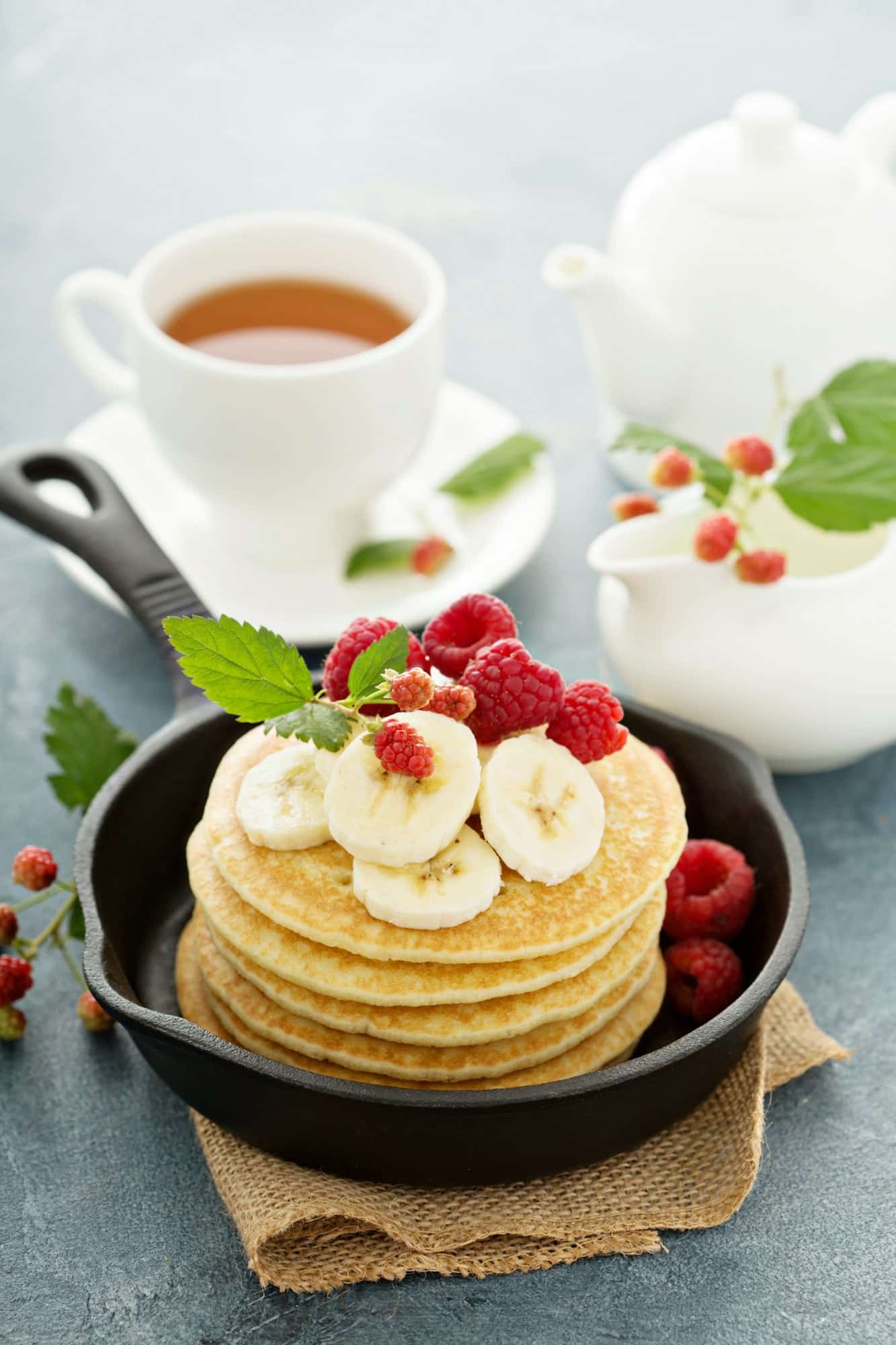A pancake, in its simplest form, is a delightful, warm disc of breakfast perfection. But what if we told you there’s a version of this breakfast classic that rises above the rest in terms of culinary prowess and sheer delight? We’re talking about the Japanese souffle pancake, a fluffy, egg-based treat that has captivated food lovers worldwide.
The Charm of the Japanese Souffle Pancake
The Japanese souffle pancake is no ordinary pancake. It’s the epitome of fluffiness, like biting into a cloud. This unique culinary creation is part pancake, part souffle, and wholly delicious. It delicately balances the classic pancake’s comfort with the sophistication of a French souffle. But what makes this fluffy pancake so special, and how can you recreate it in your own kitchen?
The secret lies in the batter, the cooking technique, and some simple but essential ingredients: eggs, sugar, and flour.
Also to discover : What’s the Best Way to Create a Gourmet Potato Dauphinoise with Gruyère Cheese?
The Importance of Egg Whites in the Pancake Batter
The characteristic fluffiness of the Japanese souffle pancake comes from the egg whites. Yet it’s not as simple as cracking an egg and adding it to your pancake mix. The secret lies in the technique.
First, separate your egg yolks and whites. The yolks will go directly into your batter, but the whites need some special attention. Whip them into a meringue, adding some sugar as you go. This process will take a few minutes, but your patience will be rewarded with a stiff, glossy meringue that’s ready to be folded into your batter. This meringue will give your pancakes the fluffiness they’re known for.
Also read : Can You Make a Gourmet Gravlax with a Dill and Mustard Sauce at Home?
But remember, while folding the meringue into the batter, treat it gently. You don’t want to deflate the air bubbles that you’ve worked hard to create.
The Art of Cooking the Souffle Pancake
Cooking the souffle pancake is another critical stage where the fluffiness can be made or broken. Unlike regular pancakes which you might cook on a high heat, these fluffy masterpieces require a slower, gentler cooking process.
First, heat a non-stick pan on a low setting. Then, spoon your batter into the pan, making sure to add it in a mound rather than spreading it out. This will help maintain the pancake’s height and fluffiness.
Once you’ve added the batter, cover the pan with a lid and let the pancake cook slowly. After a few minutes, carefully flip the pancake over and let it cook on the other side. It might require a bit more time than your regular pancake, but the result will be worth it.
The Magic Ingredient: Flour
While the egg whites play a significant role in providing fluffiness, the type and quantity of flour used in your pancake batter can also greatly influence the texture of your pancakes.
For Japanese souffle pancakes, a low-protein flour, preferably cake flour, is recommended. This type of flour helps achieve a lighter, fluffier texture in comparison to all-purpose flour. The trick is to sift the flour to ensure there are no lumps in your batter, and to mix it in gently to avoid overworking the gluten, which can make your pancakes tough rather than fluffy.
The Finishing Touch: Cream and Sugar
Once you’ve mastered the art of making the pancake, it’s time to consider the finishing touches. The Japanese have a simple yet effective approach to this: a dollop of whipped cream and a sprinkle of powdered sugar. The cream adds a rich softness that contrasts beautifully with the fluffy pancake, while the sugar adds a touch of sweetness to balance out the flavors.
Whip the cream until it holds its shape – this is where a whisk comes in handy. Sweeten it with a little sugar if you like, and then heap it onto your cooked pancakes. Dust with a little powdered sugar, and you’re ready to serve your Japanese souffle pancakes.
By understanding these critical aspects of the Japanese souffle pancake – the egg whites, the cooking process, the flour, and the finishing touches – you’re well on your way to making this delightful dish. It’s a recipe that requires a bit of patience, but the end result will be fluffy pancakes that are sure to impress anyone lucky enough to try them. So roll up your sleeves, grab your whisk, and get ready to step up your pancake game.
Understanding the Role of Cream of Tartar and Baking Powder
The Japanese souffle pancake recipe is not complete without two additional ingredients: cream of tartar and baking powder. They serve as the leavening agents that help the pancakes rise and maintain their fluffy texture.
Cream of tartar, a byproduct of wine production, is a crucial part of achieving the stiff peaks in your egg whites. It stabilizes the egg whites, preventing them from deflating too quickly and adding to the overall fluffiness of your pancakes.
Baking powder, on the other hand, is a combination of a weak acid and a base that reacts when mixed with liquid, producing carbon dioxide gas. This gas gets trapped in the batter, creating tiny air pockets that make your pancakes rise and giving them a tender crumb.
Incorporate the cream of tartar while beating the egg whites into a meringue. For the baking powder, sift it together with the cake flour to ensure even distribution in the pancake batter. Remember, these ingredients help to enhance the fluffiness of your souffle pancakes, so never skip them in your recipe.
The Serving of Japanese Souffle Pancakes: A Delightful Experience
The ultimate joy of serving and eating Japanese souffle pancakes lies not just in their fluffy texture but also in their presentation and accompaniments. Apart from the whipped cream and powdered sugar, two other popular toppings are maple syrup and fresh fruits.
A drizzle of maple syrup over the pancakes adds a delightful sweetness that complements the airy texture. It’s the traditional pancake topping, after all, and the Japanese souffle pancake is no exception. Be sure to use pure maple syrup for the best flavor.
Adding fresh fruits can enhance the overall taste and visual appeal of your pancakes. Strawberries, blueberries, bananas, or even a citrusy twist with orange segments can work wonders. They offer a refreshing contrast to the rich cream and sweet syrup, providing a well-rounded dining experience.
Remember, while making Japanese souffle pancakes might require a bit of time and patience, the reward is a plate of heavenly, fluffy pancakes that are sure to impress.
Conclusion
In the realm of pancakes, the Japanese souffle pancake stands out with its fluffy, cloud-like texture and delicate flavor. It’s a unique combination of a classic pancake and a French souffle, brought together by the magic of egg whites, a gentle cooking process, the right choice of flour, and the final touch of whipped cream and powdered sugar.
Key ingredients like cream of tartar and baking powder play crucial roles in achieving that signature fluffiness. And let’s not forget the importance of presentation with a drizzle of maple syrup and a selection of fresh fruits.
Mastering the art of making these pancakes might require patience, but the result is well worth the effort. So next time you’re looking to step up your pancake game, why not give Japanese souffle pancakes a try? Your breakfast table will thank you for it.











